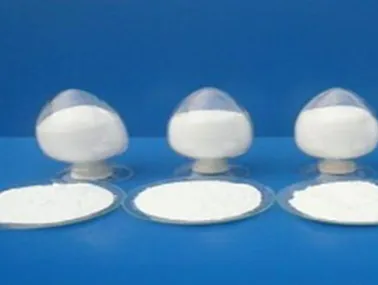
acidity regulator 300
Understanding Acidity Regulators A Closer Look at E300
In the world of food additives, acidity regulators play a crucial role in enhancing flavor, preserving freshness, and ensuring food safety. One such commonly used acidity regulator is E300, known chemically as ascorbic acid or Vitamin C. This article delves into the properties, uses, and implications of E300 in our daily lives.
What is E300?
E300, or ascorbic acid, is a naturally occurring compound found in various fruits and vegetables, most notably citrus fruits, strawberries, and bell peppers. As a powerful antioxidant, it helps protect cells from damage caused by free radicals—unstable molecules that can contribute to aging and diseases. Beyond its health benefits, E300 has significant applications in the food industry as an acidity regulator.
Role and Function
As an acidity regulator, E300 is used to maintain or adjust the acidity of food products. This is essential for several reasons
1. Flavor Enhancement E300 helps balance the pH of foods. A proper acidity level can enhance flavor profiles, making foods taste fresher and more vibrant. It can tone down excessive sweetness in some products, resulting in a more pleasing overall taste.
2. Preservation E300 acts as a natural preservative. Its acidic nature helps inhibit the growth of bacteria and molds, extending the shelf life of products. For instance, it is often added to fruit juices, jams, and sauces to prevent spoilage.
3. Nutritional Value Ascorbic acid is not only beneficial for its preservative qualities but also for its nutritional components. Adding E300 to food products can help fortify them with Vitamin C, contributing to a healthier diet.
acidity regulator 300

4. Color Preservation E300 is instrumental in maintaining the color of fruits and vegetables. It prevents oxidation, which can lead to browning and loss of appeal in fresh produce and processed foods.
Applications
E300 is widely used in various food products. It can be found in beverages, including soft drinks, fruit juices, and teas. In addition, E300 is commonly used in processed foods such as canned fruits, sauces, and dried fruits. Its versatility is one of the reasons it remains a staple in food production and manufacturing.
Moreover, the cosmetic and pharmaceutical industries also utilize E300 for its antioxidant properties. It can be found in skin care products meant to combat aging and promote skin health. In pharmaceuticals, it is involved in formulations to enhance product stability and effectiveness.
Safety and Regulations
The safety of food additives is always a concern for consumers. However, E300 is generally recognized as safe (GRAS) when consumed in moderate amounts. Regulatory bodies such as the FDA and the European Food Safety Authority (EFSA) have approved its use. Nonetheless, like any additive, it is essential for consumers to be aware of their total intake, particularly if they are sensitive or allergic to specific compounds.
Conclusion
E300, or ascorbic acid, exemplifies the vital role of acidity regulators in our food system. From enhancing flavor to preserving freshness and nutritional value, its applications are extensive. As consumers, being aware of such additives can foster better food choices, leading to a healthier lifestyle. So next time you enjoy a refreshing glass of orange juice or a savory tomato sauce, remember the unseen hero E300 working behind the scenes to elevate our culinary experiences. Recognizing the science in our food can enhance our appreciation for the complex processes that contribute to our daily meals.
-
Pure Sodium Dichloroisocyanurate Dihydrate | Powerful DisinfectantNewsAug.29,2025
-
Industrial Chemicals: Quality & Purity for Every IndustryNewsAug.28,2025
-
Nitrile Rubber Honoring Strict Production StandardsNewsAug.22,2025
-
Aspartame Ingredients Honoring Food Safety ValuesNewsAug.22,2025
-
Fertilizer for Balanced Plant NutritionNewsAug.22,2025
-
Cyanide Gold Processing with High Purity AdditivesNewsAug.22,2025
-
Formic Acid in Textile Dyeing ApplicationsNewsAug.22,2025
Hebei Tenger Chemical Technology Co., Ltd. focuses on the chemical industry and is committed to the export service of chemical raw materials.
-

view more DiethanolisopropanolamineIn the ever-growing field of chemical solutions, diethanolisopropanolamine (DEIPA) stands out as a versatile and important compound. Due to its unique chemical structure and properties, DEIPA is of interest to various industries including construction, personal care, and agriculture. -

view more TriisopropanolamineTriisopropanolamine (TIPA) alkanol amine substance, is a kind of alcohol amine compound with amino and alcohol hydroxyl, and because of its molecules contains both amino and hydroxyl. -

view more Tetramethyl Thiuram DisulfideTetramethyl thiuram disulfide, also known as TMTD, is a white to light-yellow powder with a distinct sulfur-like odor. It is soluble in organic solvents such as benzene, acetone, and ethyl acetate, making it highly versatile for use in different formulations. TMTD is known for its excellent vulcanization acceleration properties, which makes it a key ingredient in the production of rubber products. Additionally, it acts as an effective fungicide and bactericide, making it valuable in agricultural applications. Its high purity and stability ensure consistent performance, making it a preferred choice for manufacturers across various industries.





